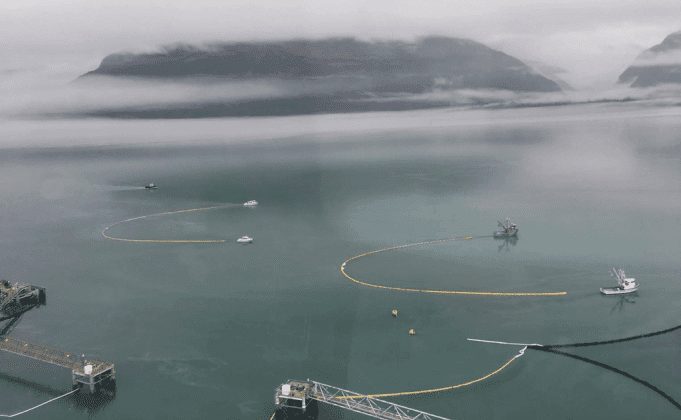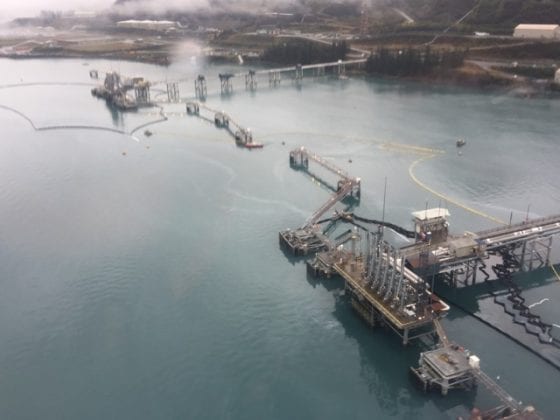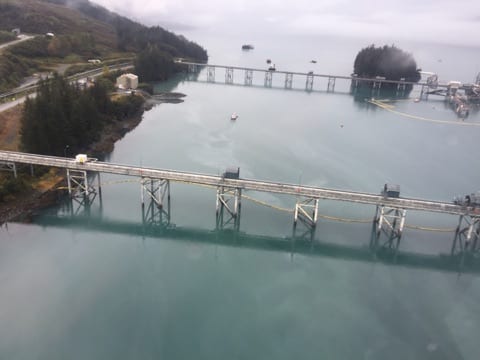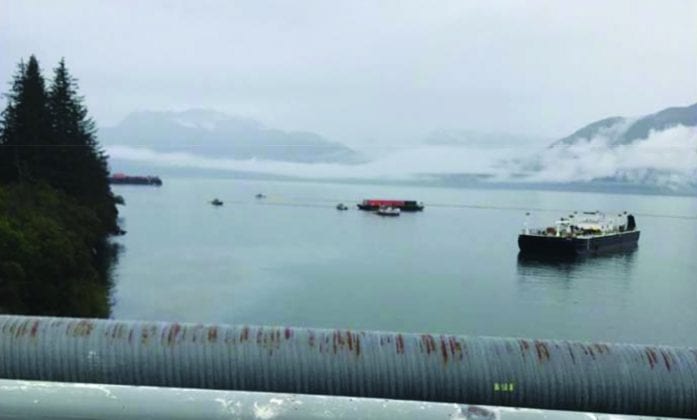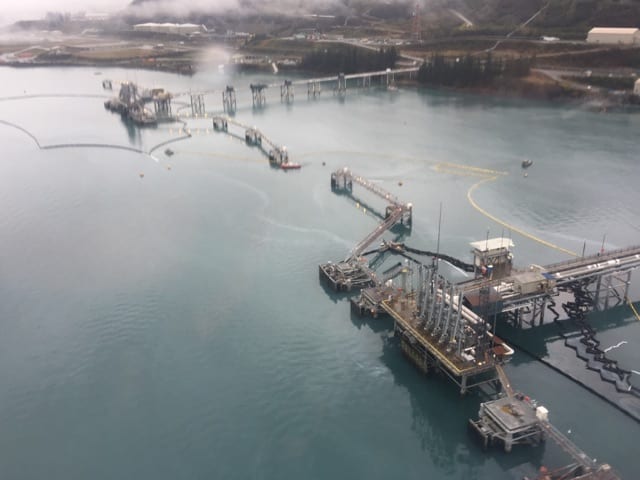
A spill at the Valdez Marine Terminal that released up to 100 gallons of crude oil on Sept. 21 is under investigation as efforts continued to clean up the sheen on the water, the Alaska Department of Environmental Conservation said.
Alyeska Pipeline Service Co. said in an announcement at noon on Sept. 22 that some 185 people are involved in the response, including more than 120 responders in the field. Alyeska said the company was activating all available resources, including pre-staged equipment around Port Valdez, to respond to the incident.
The Solomon Gulch Hatchery and Valdez Duck Flats were boomed overnight and the skimmer Valdez Star was skimming to the north of the Valdez Marine Terminal with five vessels pulling some 1,700 feet of absorbent boom. Teams will continue tending to sensitive area protection booming around the port, as well as the recovery operations near the terminal, and wildlife personnel are on the water, equipped to respond, the company said.
Crews have recovered some 221 gallons of emulsified oil and water, which indicate a spill larger than initially estimated,” the company said.
The U.S. Coast Guard meanwhile has established a safety zone from the western edge of the Valdez Marine Terminal security zone to Anderson Bay, and all vessels not involved in the response were asked to avoid that area. Mariners were advised to avoid the booming around Solomon Gulch Hatchery and the Valdez Duck Flats, and temporary flight restrictions were in place for a two mile radius from the terminal to 2,000 feet above the terminal.
Early indicators showed that a check valve in Alyeska’s fire water system may have failed during a pressure test, allowing contents of a berth loading arm to drain through the fire water system, DEC officials said.
While the oil slick is not yet contained, the source of the leak in berth 5 of the terminal has been secured, so it is not leaking any more, said Geoff Merrell, the agency’s environmental program manager.
Earlier estimates from Alyeska were that between 10-50 gallons of crude spilled.
Weather in the area was rainy, overcast and foggy, with calm winds and seas, Merrell said.
No report was immediately available on the spill’s environmental impact.
The Ship Escort/Response Vessel System was responding with a variety of oil spill clean=up boats and skimmers, including the skimmer Valdez Star, DEC said. SERVS was created in the aftermath of the March 24, 1989 Exxon Valdez oil spill disaster to provide spill prevention and spill cleanup efforts.
DEC officials said that plans are to clean up the spill, protect environmental resources and investigate the cause of the incident. Meanwhile the trans-Alaska oil pipeline system remains operational and there have been no impacts to operation of the pipeline itself.
